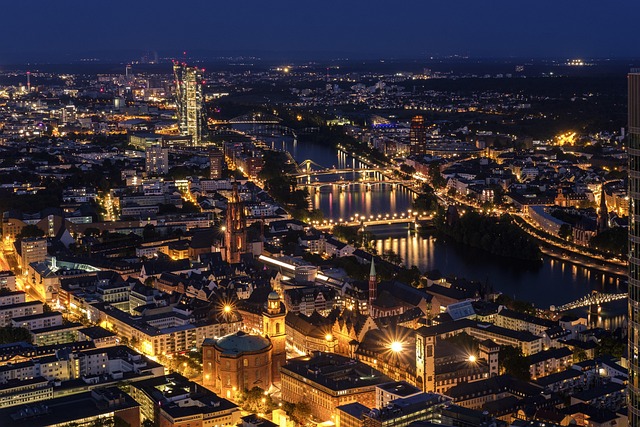Karachi, Pakistan’s bustling metropolis, has seen significant growth in its public transport landscape. This article delves into the intricate web of Karachi’s transport system, with a specific focus on the Landhi area. We explore the challenges and improvements made, examining the profound impact on local communities and commuters. Furthermore, we analyze recent developments, outline future prospects, and highlight best practices for efficient public transport management in this ever-evolving urban center, all while shedding light on Karachi’s unique transportation story.
- The Public Transport System of Karachi: An Overview
- Challenges and Improvements in Landhi Area
- Impact on Local Communities and Commuters
- Recent Developments and Future Prospects
- Best Practices for Efficient Public Transport Management
The Public Transport System of Karachi: An Overview

Karachi, Pakistan’s economic hub and a bustling metropolis, boasts one of the country’s most extensive public transport networks. This system plays a vital role in connecting the city’s diverse neighborhoods and facilitating its vibrant urban life. The Karachi Metropolitan Area is home to an array of transportation options, including buses, mini-buses (known locally as ‘auto-rickshaws’), and an expanding network of trains and metro services.
The public transport system in Karachi has evolved over the years to cater to the city’s growing population and commuting needs. The city’s bus service, operated by various private and public sector organizations, offers extensive routes covering most areas. Additionally, the introduction of the Karachi Metro Bus Rapid Transit (BRT) system has brought modern, efficient transportation to many parts of the city. In recent years, the construction of the Karachi Metro Rail has further enhanced mobility options, promising faster and more reliable travel for Karachi’s residents and visitors alike.
Challenges and Improvements in Landhi Area

The public transport system in Landhi, Karachi, faces several challenges that impact the daily commute of its residents. Overcrowding is a significant issue on buses and trains during peak hours, leading to uncomfortable and sometimes dangerous travel conditions. The lack of an efficient mass transit system has resulted in an increased reliance on private vehicles, contributing to traffic congestion and environmental concerns. Moreover, the aging infrastructure and inadequate maintenance have led to frequent delays and service disruptions.
However, efforts are being made to improve public transport in Landhi. The introduction of modern buses with improved seating capacity and air conditioning is a step towards providing a more comfortable travel experience. Additionally, the Karachi Metropolitan Transportation Authority (KMTA) has been working on expanding and upgrading the existing network, including introducing new routes and improving signal systems to reduce travel times. These improvements aim to make public transport a viable and attractive option for Landhi residents, addressing the challenges of congestion and pollution that are common in Pakistan’s bustling metropolises.
Impact on Local Communities and Commuters

The efficient public transport system in Landhi, Karachi, significantly impacts local communities and commuters. Improved accessibility to various parts of the city empowers residents, facilitates their daily commutes, and opens up opportunities for economic growth. The well-connected network reduces travel time, making it easier for people to reach workplaces, schools, and healthcare facilities. This accessibility is particularly beneficial for low-income families who rely on public transport to balance their budgets and access essential services.
Furthermore, a robust public transport system contributes to a more sustainable and environmentally friendly Karachi. By encouraging the use of buses and trains over private vehicles, Landhi’s transportation infrastructure helps alleviate traffic congestion and reduce carbon emissions. This not only improves air quality but also makes the city more liveable for its residents. The positive effects extend beyond individual experiences, fostering a sense of community and shared responsibility for the urban environment.
Recent Developments and Future Prospects

In recent years, public transport in Landhi, Karachi, has witnessed significant developments aimed at enhancing efficiency and accessibility. The introduction of modern bus rapid transit (BRT) systems has revolutionized commute times and reduced traffic congestion, making travel within the city more convenient for residents. These improvements have been accompanied by increased focus on digital integration, with real-time tracking apps and online ticketing systems now available, providing passengers with a more streamlined experience.
Looking ahead, the future of public transport in Karachi holds promising prospects. There are ongoing plans to expand the BRT network, further connecting diverse neighborhoods and promoting sustainable mobility. Additionally, the city is exploring innovative solutions like electric buses and shared mobility options to reduce carbon emissions and cater to the growing demand for eco-friendly transportation. These developments reflect a commitment to creating a more efficient, inclusive, and environmentally conscious public transport system in Landhi and beyond.
Best Practices for Efficient Public Transport Management

In the bustling metropolis of Karachi, efficient public transport management is key to ensuring a seamless and enjoyable experience for commuters. Best practices involve integrating technology and data-driven insights to optimize routes and schedules. Real-time tracking systems, available through dedicated apps, can enhance transparency and user trust, allowing passengers to make informed decisions about their journeys. Additionally, implementing dynamic pricing based on demand can help manage congestion and encourage the use of public transport during off-peak hours.
Another crucial aspect is fostering collaboration between various transport operators and city authorities. Coordinated efforts enable the creation of interconnected networks, reducing travel times and enhancing overall efficiency. Regular feedback mechanisms from users also play a vital role in identifying pain points and implementing timely improvements, making public transport more appealing and accessible for all Karachis.

Leave a Reply